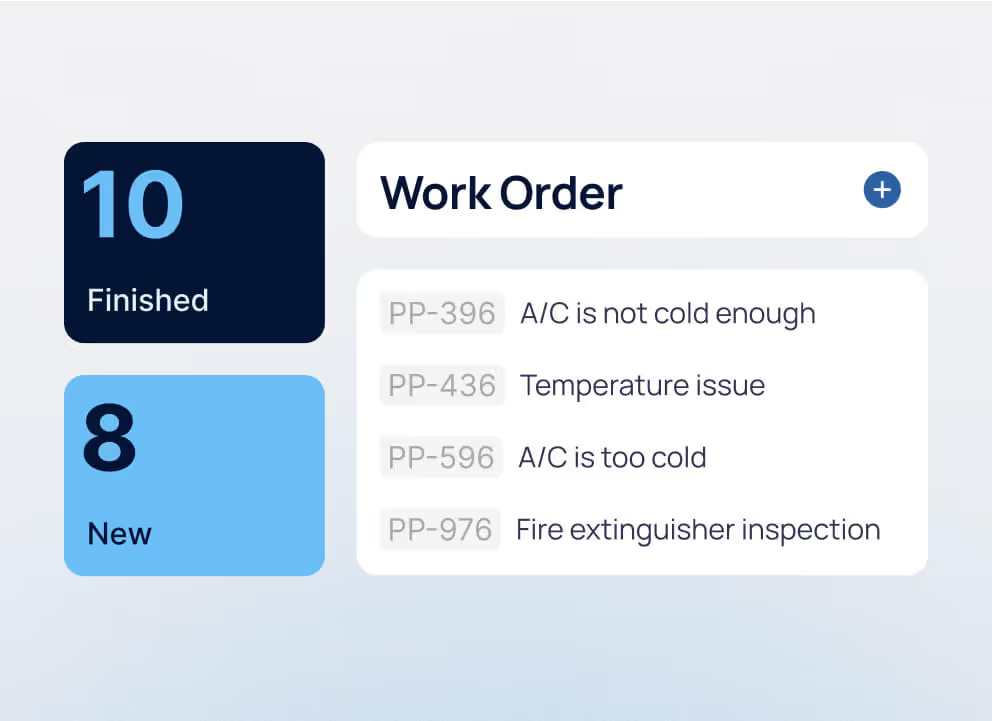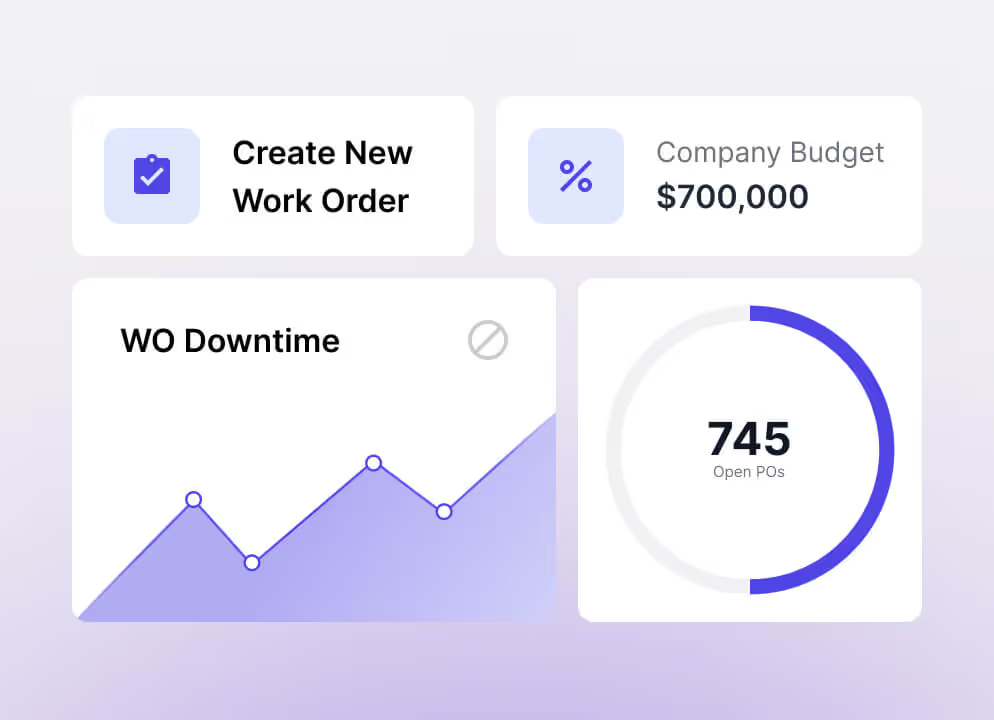The Importance of Using APIs with a CMMS
The Importance of Using APIs with a CMMS
In this post
%20(1).avif)
1
2
3
The Importance of Using APIs with a CMMS
In today's digital age, Computerized Maintenance Management Systems (CMMS) have become a critical component of maintenance operations across industries tracking maintenance activities, assets, and inventory.
In today's digital age, Computerized Maintenance Management Systems (CMMS) have become a critical component of maintenance operations across industries tracking maintenance activities, assets, and inventory. CMMS’ often come with essential features needed for maintenance management, but a team can gain even more functionality by integrating Application Programming Interfaces (APIs) to enhance the effectiveness of their maintenance operations.
What is an API?
An Application Programming Interface (API) is a set of protocols, routines, and tools that software developers use to create software applications. APIs enable different software programs to communicate and share data with one another.
How APIs are Used with CMMS
When APIs are integrated with a CMMS, the system can communicate with other software applications that the organization uses. This seamless data transfer between systems reduces the need for manual input, which can be time-consuming and even inaccurate. With APIs, data flows automatically and in real-time, making it easier to track maintenance activities, schedule work orders, and optimize resources.
How APIs are Used with CMMS
Benefits of Using APIs with CMMS
TMA Systems – A Modern Solution to Fit Your Needs
TMA Systems is a leading technology provider committed to enhancing the quality of facility maintenance through an array of cutting-edge technologies. A robust CMMS offering, WebTMA brings configurability and flexibility to meet the needs of your organization. The addition of Platform APIs to our suite of tools elevates the users’ ability to connect with other internal software and gain a holistic view of their operations data. When integrated with WebTMA, APIs can aid organizations by improving data accuracy, increasing efficiency, enhancing visibility, reducing maintenance costs, and making better overall decisions about maintenance activities.
To learn more about how your organization can benefit from our CMMS and API solutions, request a demo today.
- Eliminate manual entry and errors with real-time data sync across systems.
- Unify workflows by integrating CMMS with ERP, BAS, IoT, and more.
- Get powerful insights through connected asset tracking, advanced analytics,

Download the eBook now
You’re all set!
Your eBook is on its way to your inbox. We hope it brings fresh insights and practical takeaways to help you get more from your maintenance operations.
Explore related resources
.avif)
.svg)
The Importance of Using APIs with a CMMS
In today's digital age, Computerized Maintenance Management Systems (CMMS) have become a critical component of maintenance operations across industries tracking maintenance activities, assets, and inventory.
In today's digital age, Computerized Maintenance Management Systems (CMMS) have become a critical component of maintenance operations across industries tracking maintenance activities, assets, and inventory. CMMS’ often come with essential features needed for maintenance management, but a team can gain even more functionality by integrating Application Programming Interfaces (APIs) to enhance the effectiveness of their maintenance operations.
What is an API?
An Application Programming Interface (API) is a set of protocols, routines, and tools that software developers use to create software applications. APIs enable different software programs to communicate and share data with one another.
How APIs are Used with CMMS
When APIs are integrated with a CMMS, the system can communicate with other software applications that the organization uses. This seamless data transfer between systems reduces the need for manual input, which can be time-consuming and even inaccurate. With APIs, data flows automatically and in real-time, making it easier to track maintenance activities, schedule work orders, and optimize resources.
How APIs are Used with CMMS
Benefits of Using APIs with CMMS
TMA Systems – A Modern Solution to Fit Your Needs
TMA Systems is a leading technology provider committed to enhancing the quality of facility maintenance through an array of cutting-edge technologies. A robust CMMS offering, WebTMA brings configurability and flexibility to meet the needs of your organization. The addition of Platform APIs to our suite of tools elevates the users’ ability to connect with other internal software and gain a holistic view of their operations data. When integrated with WebTMA, APIs can aid organizations by improving data accuracy, increasing efficiency, enhancing visibility, reducing maintenance costs, and making better overall decisions about maintenance activities.
To learn more about how your organization can benefit from our CMMS and API solutions, request a demo today.
- Eliminate manual entry and errors with real-time data sync across systems.
- Unify workflows by integrating CMMS with ERP, BAS, IoT, and more.
- Get powerful insights through connected asset tracking, advanced analytics,

Register for your free webinar
You’re all set!
Your webinar is on its way to your inbox. We hope it brings fresh insights and practical takeaways to help you get more from your maintenance operations.
Explore related resources
.avif)
.svg)
The Importance of Using APIs with a CMMS
The Importance of Using APIs with a CMMS
The Importance of Using APIs with a CMMS

In today's digital age, Computerized Maintenance Management Systems (CMMS) have become a critical component of maintenance operations across industries tracking maintenance activities, assets, and inventory. CMMS’ often come with essential features needed for maintenance management, but a team can gain even more functionality by integrating Application Programming Interfaces (APIs) to enhance the effectiveness of their maintenance operations.
What is an API?
An Application Programming Interface (API) is a set of protocols, routines, and tools that software developers use to create software applications. APIs enable different software programs to communicate and share data with one another.
How APIs are Used with CMMS
When APIs are integrated with a CMMS, the system can communicate with other software applications that the organization uses. This seamless data transfer between systems reduces the need for manual input, which can be time-consuming and even inaccurate. With APIs, data flows automatically and in real-time, making it easier to track maintenance activities, schedule work orders, and optimize resources.
How APIs are Used with CMMS
Benefits of Using APIs with CMMS
TMA Systems – A Modern Solution to Fit Your Needs
TMA Systems is a leading technology provider committed to enhancing the quality of facility maintenance through an array of cutting-edge technologies. A robust CMMS offering, WebTMA brings configurability and flexibility to meet the needs of your organization. The addition of Platform APIs to our suite of tools elevates the users’ ability to connect with other internal software and gain a holistic view of their operations data. When integrated with WebTMA, APIs can aid organizations by improving data accuracy, increasing efficiency, enhancing visibility, reducing maintenance costs, and making better overall decisions about maintenance activities.
To learn more about how your organization can benefit from our CMMS and API solutions, request a demo today.


Related resources
Related resources
You’ve seen what’s possible—connect with us to learn how TMA Systems can support your goals beyond the event.
You’ve read the insights, now see how TMA Systems helps teams put them into practice.
From ideas to impact
You’ve read the insights, now see how TMA Systems helps teams put them into practice.
From screen to solution
You’ve watched what’s possible, now see how TMA Systems works for your organization.
From insight to implementation
You’ve explored the strategies, now see how we can bring them to life across your real facilities.
From insight to implementation
You’ve explored the strategies, now see how we can bring them to life across your real facilities.




.svg)

.avif)





